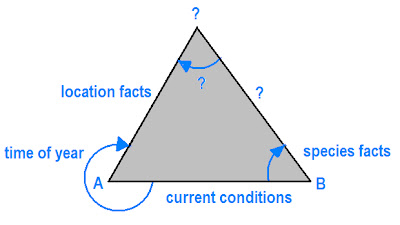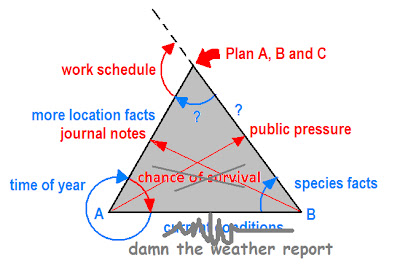South-metro leaders and a growing number of fishermen are pushing to let the South Platte be more of a natural river as it flows down from the mountains through the Denver area.
They're planning to rechannel the river, revegetate and bring in boulders to rehabilitate the wide, shallow waterway into a deeper, meandering river that could sustain significantly more fish. Not just wily big-mouth bottom-feeders — but trout.
Enhancing the South Platte, proponents contend, will lead to a healthier metro economy.
"We are the custodians of the river. It is incumbent upon us to keep that river a viable, healthy source for the ecology of the area, the wildlife, migratory birds and for the community," Littleton Mayor Debbie Brinkman said. "We're not doing this for economic reasons. There may be an economic benefit."
The Littleton City Council this month voted unanimously to move ahead with an ambitious revitalization project that will let the heavily dammed South Platte behave more like a natural river but still be controllable because of its urban setting.
The $4 million project run by South Suburban Parks and Recreation, with support from Arapahoe County and Littleton, would scoop a deeper channel into a 2.4-mile stretch of the river south of central Denver.
A "riparian terrace," planted with native willows, dogwoods, berries, wild plums and buffalo grasses, would fall away toward the river. In the waterway, a dozen or so riffles and pools where fish can escape heat would be created, and eroding banks would be stabilized with buried rip-rap rocks.
The conservation group Trout Unlimited has embraced the cause of revitalizing the South Platte throughout the metro area. The anglers are mobilizing to create an early-warning network to alert authorities about pollution and ensure swift responses.
A recent carp fly-fishing competition netted $40,000 to launch efforts to put more fish in the river.
"If there was enough of a will within the city of Denver, the city could create a trout fishery through Denver," said John Woodling, a retired state fish biologist who for years ran sampling stations that proved trout exist in the warm waters of the South Platte.
About three years ago, Woodling, 65, went along with a state water-quality-control commission reclassification of the South Platte that resulted in relaxed standards for discharges by water-treatment plants — a decision Woodling said he regrets.
"Here's a resource that could be protected, a resource that could be far more important to our society than it is now," he said. "We've been sold — and I helped sell — a bill of goods for a long time which said that there is nothing there to protect."
A recent Sunday walk across a bridge over the South Platte to check out Tim Tebow and the Denver Broncos' game against the Detroit Lions proved his point.
As Woodling crossed the river to enter Sports Authority Field at Mile High, he saw two men fly-fishing. When he left at halftime, in disgust as Denver went down, he noticed the two men still fishing happily, evidence that fish likely were biting.
The numbers and variety of fish in the South Platte dwindled with urbanization and flood controls installed after the 1965 flood that killed 21 people and caused $540 million in damage. Completion of the Chatfield Dam in 1975 tamed the river. Peak flows were reduced from 4,000 cubic feet per second before the dam to 650 cfs.
Today, the South Platte "no longer functions as a natural river system" that can support a riparian corridor, according to a report commissioned by Littleton planners.
The state's reclassification of the South Platte shifted its status from "cold water" to "warm water class 1" — which is defined as capable of sustaining a wide variety of sensitive species "but for correctable water-quality conditions."
Point-source polluters — such as the Littleton/Englewood Water Treatment Plant, just east of the river between Yale and Hampden — now have greater flexibility in the discharges they are allowed to release into the river.
The problem with cleaning up discharges is that plant upgrades will require more money than Littleton and Englewood can afford, Brinkman said.
Meanwhile, Trout Unlimited leaders are designing laminated cards to pass out to fishermen who volunteer to watch out for and report pollution while they fish.
Inspired by fisherman Trevor Tanner's recent effort to alert authorities to the spill by the Suncor oil refinery north of downtown, the idea is to distribute phone numbers useful for mobilizing swifter responses to future spills.
"The frustration is that it took a little long to really get the response moving" after black goo from Suncor was found to be seeping into Sand Creek and the South Platte, said David Nickum, president of Colorado Trout Unlimited. "In cases like that, the sooner you can respond, the better."
The cards will be mailed to Trout Unlimited's 10,000 members and distributed through Colorado Parks and Wildlife, at fishing events and at fly- and-bait shops.
Urban anglers often go to areas that high-speed drivers don't see, and recruiting them as sensors "could have a huge impact, and it could save the person who made the discharge large amounts of money," said Todd Fehr, president of Trout Unlimited's Denver chapter.
"What I want to do is make the river fishable for people. Not necessarily so that people can eat the fish but so that children could go angling after school," Fehr said.
Rivers that sustain fish "are the kinds of assets that in other communities around the state — Breckenridge, Steamboat Springs, Aspen — are part of what makes those places special," Fehr said.
Anglers report healthy rainbow and brown troughs all along the river. And fly-fishing for carp continues to draw people who are following the advice of Chris Santella's new book "50 More Places to Fly Fish Before You Die" to the South Platte.
Fishing guides in Denver say they earn as much as $300 leading outsiders to the good spots.
The South Platte "already has gained a reputation as a carp fishery," said Will Rice, who submitted the recommendation to Santella. "But if the small-mouth species (such as trout) could be introduced, this definitely could be an economic draw for Denver."
Bruce Finley: 303-954-1700 or bfinley@denverpost.com
Link to Denver Post article:

































